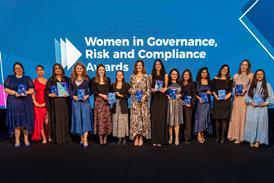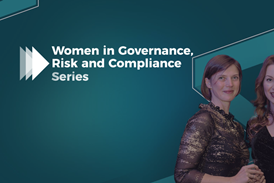
The Role of GRC in Delivering ESG
October 7th, 15:30 to 17:00 BST + On-Demand
Headline Sponsor
(October 2021)

Archer
Archer helps organizations manage risk in the digital era—uniting stakeholders, integrating technologies and transforming risk into reward.
The GRC Red Flags Series with Michael Rasmussen: ES-G-RC – The Role of GRC in Delivering ESG
ESG – Environmental, Social, Governance – remains front-page business news. Organizations around the world and across industries are challenged to define, implement, and report on ESG. The pressures are coming from all directions: investors, customers, employees, regulators, and activists. The reality is that ESG has teeth, and organizations have to do something about it.
Previous iterations of ESG were Corporate Social Responsibility (CSR) and Sustainability. These were often passed around the organization like a hot potato and often landed in the lap of marketing as a branding exercise. This is not the case with ESG; the risk exposure to the organization is too great. The goal is to be an organization of integrity to ensure that the values, ethics, statements, commitments, relationships, and transactions are a reality in practice, process, relationships, and transactions.
However, understanding ESG is complex. What I see happening in organizations reminds me of the parable of the blind men and the elephant. One blind man touches the tail and thinks it is a rope, another touches the body and feels a wall, and another touches a leg and says it is a tree. The same is happening with ESG as different functions/departments see what impacts them. Some focus on the E for the environment and think that is the most important since it leads the acronym ESG. Others are focused on the S, and others the G. All three are critical, and intersect with each other.
There is no single global standard for ESG. There is some reporting guidance, and the most popular is the Global Reporting Initiative (GRI), and what is now the Value Reporting Foundation (the merger of the International Integrated Reporting Council (IIRC) and the Sustainability Accounting Standards Board (SASB)). Nothing is complete; they each have their different perspectives. The organization is left to develop a strategy and process that delivers what they need to report to their respective/interested stakeholder groups.
This GRC Red Flag Series will explore the role of GRC in delivering and automating ESG reporting and accountability in the organization. Organizations need structured guidance on how to deliver on ESG strategy and processes across the diverse areas of ESG.
In our interview and panel discussion, attendees of this GRC Red Flag Series will learn about:
This GRC Red Flag episode will look at how effective and mature risk management delivers:
• Drivers and trends advancing ESG in the organization
• Developing a cohesive ESG strategy and process
• Providing accountability and integrity in ESG initiatives
• Defining ESG processes that are enabled through a GRC capability model
• Automation of ESG and GRC with technology that makes ESG efficient, effective, and agile
What to expect by joining
The GRC Red Flag Series: ES-G-RC – The Role of GRC in Delivering ESG
The GRC Red Flag series will identify and debate the current & future critical risks and regulatory changes that can impact businesses.

News Alerts
30 Minutes

Fireside Chat
30 Minutes

Panel Discussion
30 Minutes
Joining Michael Rasmussen for ES-G-RC – The Role of GRC in Delivering ESG
Peader Duffy
ESG Practice Lead, Archer
Mike Still
Mike has over 35 years of experience in the risk management and insurance industry serving a broad range of clients by size and business sector.
Soubhagya Parija
Vice President & Chief Risk Officer, FirstEnergy








